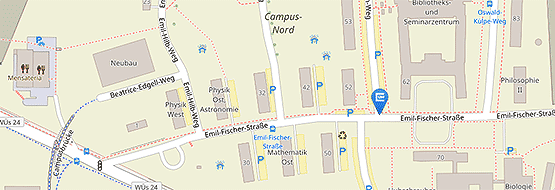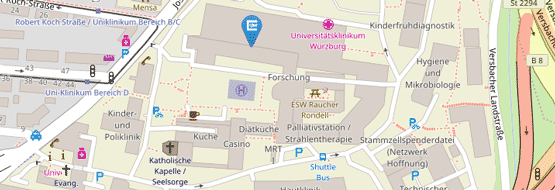P 11: C. Aguilar
An organoid-based model to study bacterial prostatitis
State of the art
Bacterial prostatitis (BP) affects 1% of men worldwide and has a very high tendency to chronic, even after adequate antibiotic treatment (1). They are also associated with a higher risk of prostate cancer (2). The bacterium Escherichia coli (E. coli) is the most common cause of these infections, but other uropathogens such as Klebsiella spp., Enterococcus spp., or Proteus spp. can also infect the prostate (1,3). So far, very little is known regarding E. coli pathogenesis in the prostate epithelium and its connection to chronic prostatitis. Basic questions are still unanswered: Does E. coli invade the prostate cells? Does E. coli prefer a specific cell type to adhere to or invade? How does E. coli adhere to the cells? Can E. coli replicate within prostate cells and what is the host response to infection?. This lack of knowledge is in part due to the lack of suitable in-vitro models that 1) mimic the prostate epithelium complexity, and II) support long-term in vitro infections.
Previous work
Cell line-based infection models have contributed to our understanding of E. coli pathogenesis in the prostate, however, they have limitations in faithfully mimicking the course of an infection in the epithelium. For example, cell lines lack the epithelial complexity observed in vivo, and often fail to mimic important epithelial functions, such as polarization, barrier formation, and cell differentiation (4). Given their ability to differentiate and self-organize and to exhibit at least some of the functions that they would have in vivo, organoids provide an excellent model for infection biology and translational studies (4). Thus, my lab has generated a biobank of mouse and human prostate adult stem cell (ASC)-derived organoids to develop an advanced organoid-based model to study bacterial prostatitis. Using prostate organoids as a source of primary cells, we have established a monolayer model that allows easy microscopy and high-throughput analysis and in which cellular differentiation can be directed using a differentiation media (Figure 1A).
Our scRNA-seq analysis shows that cell monolayers grown under standard conditions yield mostly basal stem cells-like cells (KRT5+), while cells grown with our differentiation media differentiated into luminal differentiated cells (KTR5-), maintaining a low number of basal stem cells as in the tissue (Figure 1B-C).
The infection of these two types of monolayers showed that E. coli adheres, invades, and replicates more efficiently in luminal differentiated cells than in basal cells (Figure 1D-E). As we have observed in E. coli-infected mice (in collaboration with Dr. Ingersoll - Cochin Institute, Paris), E. coli forms intracellular bacterial communities within luminal prostate cells similar to what has been described in bladder cells.

Figure: Prostate organoid-derived monolayers as infection models to study E. coli-induced prostatitis. A. Experimental procedure to generate organoid-derived monolayers. B. UMAP showing clustering of monolayers grown under standard (in pink) or differentiation conditions (in blue). C. UMAP showing colored-coded clustering based on signature markers. D. Confocal images of monolayers grown under standard conditions or differentiation conditions and infected with E. coli. Green: expression of KRT5 (prostate stem cell marker), blue: nuclei, red: E. coli. E. Quantification of intracellular E. coli after infection (hpi: hours post infection; standard grow condition: green bars/dots; differentiation condition: grey bars/dots).
Work Plan
The global aim of the proposed project is to develop an advanced model of the prostate epithelium and to use it to decipher the role that prostate cells have in E. coli pathogenesis. The following specific aims will be pursued: I) Identification of E.coli target cell in the epithelium and, II) Analysis of protein-protein interactions involved in E. coli adhesion/invasion. For that, we will first establish an organoid-based model of the human prostate epithelium by adapting our mouse organoid protocols. Functional and phenotypic characterization of the human model will be done following a similar approach to the mouse model (e.g. microscopy, gene expression, barrier integrity, scRNA-seq). A Transwell system will be used to potentially induce higher cellular differentiation, by exposing the cells apically to either air (ALI cultures) or seminal fluid from donors (commercially available). ScRNA-seq analysis of the E. coli-infected models will show whether the bacterium has a preferred target cell and will identify potential host factors candidates important for E. coli success in the prostate cells. In addition, the identification of protein-protein interactions between the bacterium and the luminal cells could reveal novel receptors involved in E. coli’s interaction with the host cells. Altogether, the establishment and characterization of these models will be helpful not only to E. coli research but also to other genitourinary pathogens such as Klebsiella spp. or Chlamydia spp.
References
- Khan FU, Ihsan AU, Khan HU, Jana R, Wazir J, Khongorzul P, Waqar M, Zhou X. Comprehensive overview of prostatitis. Biomed Pharmacother. 2017 Oct;94:1064-1076. doi: 10.1016/j.biopha.2017.08.016.
- Shrestha E et al. Oncogenic gene fusions in nonneoplastic precursors as evidence that bacterial infection can initiate prostate cancer. Proc Natl Acad Sci U S A. 2021 Aug 10;118(32):e2018976118. doi:10.1073/pnas.2018976118
- Trinchieri A, Abdelrahman KM, Bhatti KH, Bello JO, Das K, Gatsev O, Gergova I, Magri V, Mourmouras N, Mourmouris P, Murdeshwar S, Perletti G, Saltirov I, Sissoko I, Stamatiou K, Buchholz N. Spectrum of Causative Pathogens and Resistance Rates to Antibacterial Agents in Bacterial Prostatitis. Diagnostics (Basel). 2021 Jul 25;11(8):1333. doi: 10.3390/diagnostics11081333.
- Aguilar C, Alves da Silva M, Saraiva M, Neyazi M, Olsson IAS, Bartfeld S. Organoids as host models for infection biology - a review of methods. Exp Mol Med. 2021 Oct;53(10):1471-1482. doi: 10.1038/s12276-021-00629-4.






